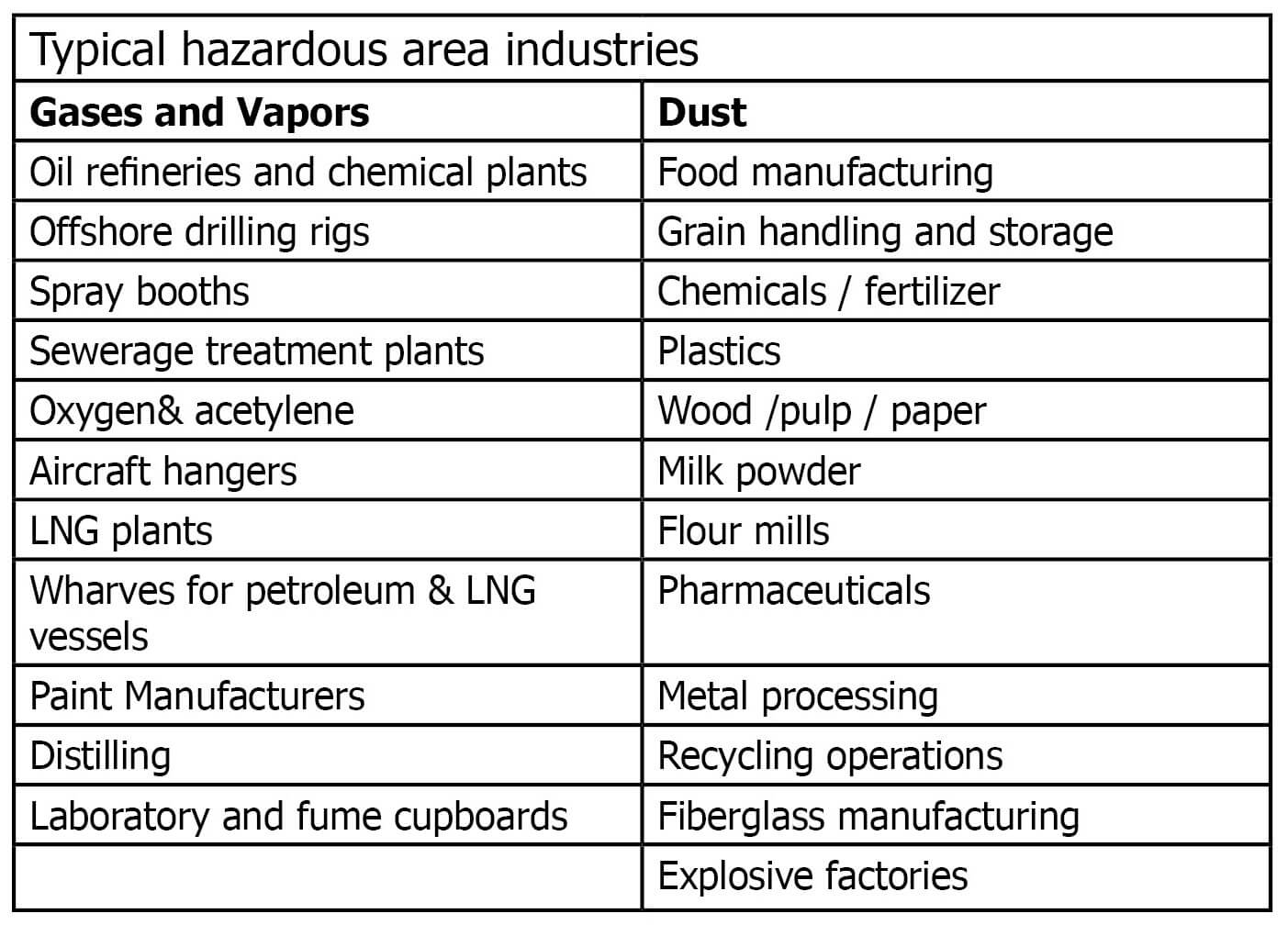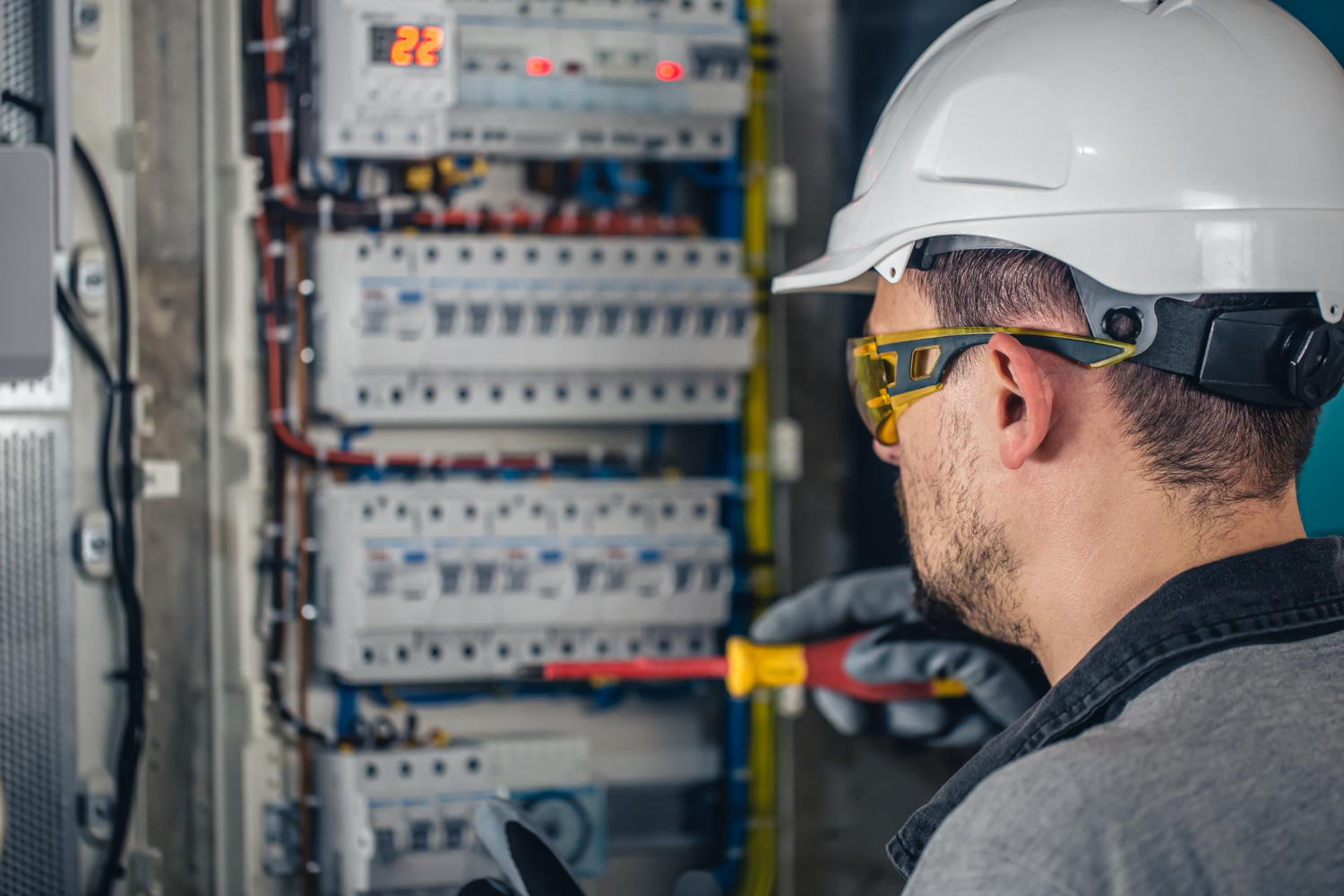How Roar Solutions can Save You Time, Stress, and Money.
How Roar Solutions can Save You Time, Stress, and Money.
Blog Article
9 Easy Facts About Roar Solutions Shown
Table of ContentsRoar Solutions - QuestionsRoar Solutions Things To Know Before You BuyThe Greatest Guide To Roar Solutions
In order to shield installations from a prospective surge a technique of evaluating and classifying a possibly unsafe location is required. The objective of this is to make sure the appropriate option and installation of devices to ultimately avoid an explosion and to make certain safety and security of life.
(https://www.cheaperseeker.com/u/roarsolutions)
No equipment must be installed where the surface area temperature level of the tools is better than the ignition temperature of the provided threat. Below are some usual dust harmful and their minimal ignition temperature. Coal Dust 380C 225C Polythene 420C (melts) Methyl Cellulose 420C 320C Starch 460C 435C Flour 490C 340C Sugar 490C 460C Grain Dirt 510C 300C Phenolic Material 530C > 450C Aluminium 590C > 450C PVC 700C > 450C Residue 810C 570C The chance of the threat existing in a focus high enough to create an ignition will certainly vary from location to place.
In order to identify this threat an installment is divided into areas of threat relying on the quantity of time the dangerous exists. These locations are referred to as Areas. For gases and vapours and dirts and fibres there are 3 zones. Zone 0 Zone 20 A harmful atmosphere is highly most likely to be existing and may exist for extended periods of time (> 1000 hours annually) or even constantly Area 1 Zone 21 A dangerous ambience is possible yet unlikely to be present for extended periods of time (> 10 450 C [842 F] A classification of T6 suggests the minimum ignition temperature is > 85 C [185 F] Dangerous area electric equipment perhaps developed for usage in greater ambient temperature levels. This would showed on the ranking plate e.g. EExe II C T3 Ta + 60C( This suggests at 60C ambient T3 will not be surpassed) T1 T1, T2, T3, T4, T5, T6 T2 T2, T3, T4, T5, T6 T3 T3, T4, T5, T6 T4 T4, T5, T6 T5 T5, T6 T6 T6 A T Course score of T1 implies the maximum surface area temperature level produced by the tool at 40 C is 450 C. Thinking the linked T Course and Temperature ranking for the tools are proper for the area, you can always utilize an instrument with a much more rigorous Division score than needed for the location. There isn't a clear response to this inquiry regrettably. It really does depend on the sort of tools and what repairs require to be performed. Equipment with specific test procedures that can not be done in the area in order to achieve/maintain 3rd party rating. Must come back to the factory if it is before the equipment's service. Field Repair Work By Authorised Employee: Difficult testing may not be needed nonetheless particular treatments may need to be followed in order for the equipment to keep its 3rd party ranking. Authorised personnel must be used to do the work correctly Fixing should be a like for like replacement. New element need to be taken into consideration as a direct substitute calling for no unique screening of the equipment after the repair service is total. Each tool with a dangerous rating need to be assessed separately. These are described at a high level listed below, but also for more comprehensive details, please refer straight to the guidelines.
The 25-Second Trick For Roar Solutions
The equipment register is an extensive database of equipment documents that includes a minimum set of areas to identify each product's location, technological criteria, Ex category, age, and environmental data. This info is crucial for monitoring and handling the equipment properly within unsafe locations. On the other hand, for routine or RBI tasting inspections, the grade will be a combination of Detailed and Close evaluations. The proportion of Comprehensive to Shut examinations will be established by the Devices Danger, which is analyzed based on ignition risk (the likelihood of a resource of ignition versus the chance of a flammable environment )and the harmful area classification
( Area 0, 1, or 2). This variant will certainly also affect the resourcing demands for job preparation. When Lots are specified, you can establish tasting strategies based upon the sample dimension of each Great deal, which refers to the number of random devices products to be examined. To establish the called for example size, two facets need to be reviewed: the dimension of the Whole lot and the group of examination, which shows the degree of effort that must be applied( decreased, normal, or boosted )to the assessment of the Lot. By incorporating the category of inspection with the Lot size, you can then establish the ideal rejection standards for an example, meaning the permitted number of faulty products discovered within that sample. For more information on this process, please refer to the Energy Institute Guidelines. The IEC 60079 basic advises that the maximum period in between examinations ought to not exceed three years. EEHA examinations will additionally be conducted beyond RBI projects as part of scheduled maintenance and devices overhauls or repair services. These evaluations can be credited toward the RBI example sizes within the influenced Great deals. EEHA examinations are performed to identify faults in electric equipment. A weighted racking up system is vital, as a single item of tools might have several faults, each with varying levels of ignition danger. If the mixed rating of both evaluations is much less than twice the fault score, the Whole lot is deemed acceptable. If the Lot is still taken into consideration unacceptable, it needs to undertake a complete inspection or reason, which may cause stricter inspection procedures. Accepted Whole lot: The reasons for any type of mistakes are recognized. If an usual failing setting is discovered, additional tools may need examination and repair service. Faults are classified by seriousness( Security, Integrity, House cleaning ), ensuring that immediate issues are examined and addressed quickly to alleviate any type of effect on safety or operations. The EEHA data source ought to track and videotape the lifecycle of faults in addition to the corrective activities taken. Executing a durable Risk-Based Inspection( RBI )strategy is essential for ensuring compliance and safety and security in managing Electric Devices in Hazardous Locations( EEHA) (high voltage courses). Automated Fault Scoring and Lifecycle Management: Effortlessly handle faults and track their lifecycle to improve assessment precision. The intro of this assistance for risk-based evaluation better reinforces Inspectivity's setting as a best-in-class remedy for governing conformity, as well as for any asset-centric examination usage situation. If you want finding out a lot more, we welcome you to ask for a demo and discover exactly how our option can change your EEHA monitoring processes.
The Buzz on Roar Solutions

In terms of explosive danger, a dangerous location is an environment in which an explosive environment is existing (or may be anticipated to be present) in quantities that call for unique safety measures for the building and construction, installation and use tools. eeha certificate. In this article we discover the difficulties faced in the work environment, the threat control measures, and the needed proficiencies to function safely
It is a consequence of contemporary life that we produce, store or manage a series of gases or liquids that are regarded combustible, and an array of dirts that are considered flammable. These compounds can, in specific problems, create eruptive environments and these can have significant and tragic repercussions. The majority of us know with the fire triangular remove any kind of among the 3 aspects and the fire can not occur, yet what does this mean in the context of dangerous areas? When breaking this down right into its easiest terms it is essentially: a mix of a certain amount of launch or leakage of a certain compound or material, mixing with ambient oxygen, and the visibility of a source of ignition.
In the majority of circumstances, we can do little about the levels of oxygen airborne, yet we can have considerable influence on sources of ignition, for instance electric tools. Unsafe locations are documented on the dangerous area category illustration and are recognized on-site by the triangular "EX" indicator. Below, among other key information, areas are divided right into three types depending upon the threat, the chance and duration that an explosive environment will certainly exist; Area 0 or 20 is regarded one of the most hazardous and Area 2 or 22 is deemed the least.
Report this page